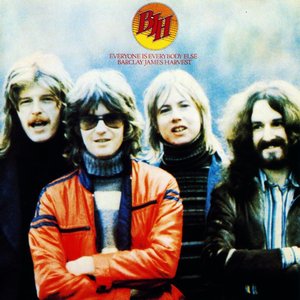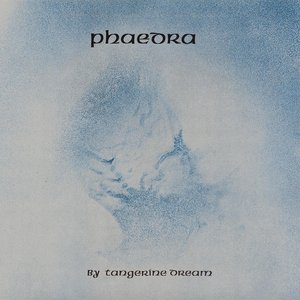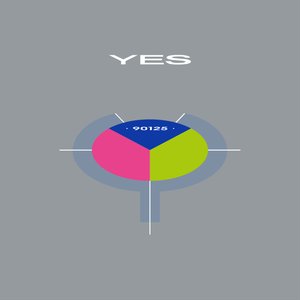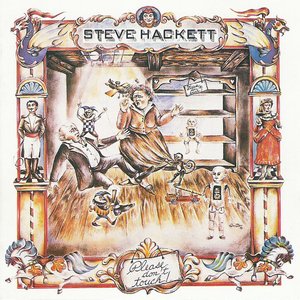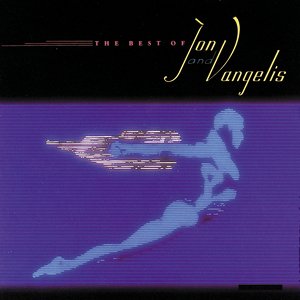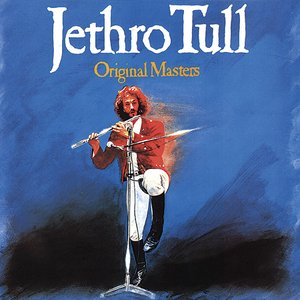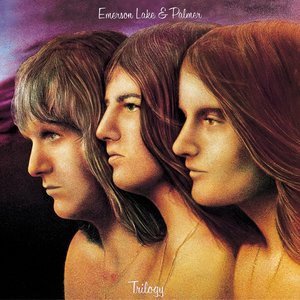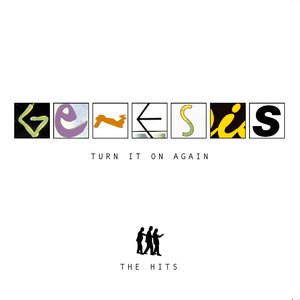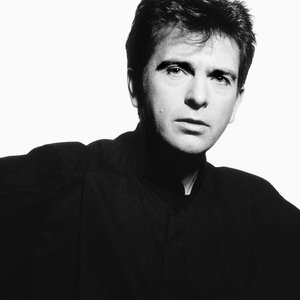Wiki
-
Release Date
25 May 1973
-
Length
2 tracks
Tubular Bells is a record album, written and mostly performed by Mike Oldfield, released in 1973. The late Vivian Stanshall provided the voice of the "Master of Ceremonies" who reads off the list of instruments at the end of the first movement. The piece was later orchestrated by David Bedford for The Orchestral Tubular Bells version and it had two sequels in the 1990s, Tubular Bells II and Tubular Bells III.
Significance
Oldfield approached (and was rejected by) many other established record labels. Some of the rejections were because they believed the piece to be unmarketable. Oldfield then played his demos to some of the Engineers at The Manor; they along with their boss, Richard Branson decided to give Oldfield a chance. Virgin Records released Oldfield's debut album Tubular Bells as its first album; hence the catalogue number V2001 (although V2002 and V2003 were released on the same date).
Mike Oldfield played most of the instruments on the album (see below), recording them one at a time and layering the recordings to create the finished work. Many of his subsequent albums feature this technique. Though fairly common in the music industry now, at the time of the production of Tubular Bells not many musicians made use of it, preferring multi-musician "session" recordings.
Tubular Bells is the album most identified with Oldfield and the reverse may be true as well as he has frequently returned to it in later works. The opening passage of the title track on the album Crises and the piece Harbinger on the album Music of the Spheres are clearly derived from the opening of Tubular Bells. The opening is also quoted directly in the song Five Miles Out from the album of the same name and the song also features his "trademark" instrument, "Piltdown Man" (referring to his singing like a caveman, first heard on Tubular Bells).
Tubular Bells stayed in the British charts for over five years, reaching the number 1 spot after more than a year and taking there for one week the place of his second album, Hergest Ridge, thereby becoming one of only three artists in the UK to knock himself off the first spot. It sold more than two million copies in the UK alone and according to some reports 15 to 17 million copies worldwide. The album went gold in the USA and Mike Oldfield received a Grammy Award for the best Instrumental Composition in 1975.
The coda at the end of Part Two, the Sailor's Hornpipe, was originally created as a much longer production, with Vivian Stanshall providing comic narration as an obviously-inebriated tour guide showing the listener around the Manor House where the album was recorded. It was cut from the final version for being too strange to be put on an unknown artist's first album, though it can be heard "in all its magnificent foolishness" (from the liner notes) on the Boxed set, which features completely remixed versions of Tubular Bells, Hergest Ridge, Ommadawn and several shorter tracks. It can also be heard on the SACD (multi-channel track only).
In 2008 when Oldfield's original 35 year deal with Virgin Records ended, the rights to the piece were returned to him, and will be transferred to Mercury Records; according to a report in the Music Week magazine in 2005.
In popular culture
The opening theme, which was eventually chosen for the 1973 film The Exorcist, gained the record considerable publicity and is how many people have probably first heard the work. Along with a number of other Oldfield pieces it was used in the 1979 NASA movie, The Space Movie. The opening theme has been sampled by many other artists such as Janet Jackson on her song The Velvet Rope. The opening theme has also gained cultural significance as a 'haunting theme'; partly due to the association with The Exorcist.
In television it was also used in the in several episodes of the Dutch children's series Bassie en Adriaan, an episode ("Ghosts") of the BBC series My Family and an episode (Poltergeist III - Dipesto Nothing) of Moonlighting. It was also used in a television advertisement for Volkswagen in 2003. It has also been used in other films such as 1974's Black Christmas, 1985's Weird Science, 2001's Scary Movie 2, 2002's The Master of Disguise and 2004's Saved!.
Tubular Bells series
Tubular Bells can be seen as the first of a "series" of albums continuing with Tubular Bells II (1992), Tubular Bells III (1998) and The Millennium Bell (1999). Finally in 2003 Oldfield released Tubular Bells 2003, a re-recording of the original Tubular Bells with updated digital technology and several "corrections" to what he saw as flaws in the first album's production. This version is notable for replacing the late Vivian Stanshall's narration with a newly recorded narration by John Cleese.
Other versions include a quadrophonic version in 1975 ("For people with four ears", as the sleeve said; the quad mix was later used for the multi-channel part of the SACD release), an orchestral version in the same year (the Orchestral Tubular Bells with David Bedford), and different live recordings; a complete one can be found on the double live album Exposed from 1979.
Album art
The cover design was by Trevor Key, who would go on to create the covers of many Oldfield albums, and was inspired by Magritte's "Castle in the Pyrenees".
The concept for the triangular bell on the album cover art originally came from the idea of a bell which had been destroyed. Oldfield had come up with this when he had dented the set of Tubular bells used to record the album when playing them.
The "bent bell" image on the cover is also associated with Oldfield, even being used for the logo of his personal music company, Oldfield Music, Ltd. The image was also the main focus for the cover art of the successive Tubular Bells albums.
Album progression
Part one opens with a soft minor key piano line in 15/8 eventually played verbatim by organ and glockenspiel. This riff is made up of two bars; the first bar is in 7/8, the second bar is in 8/8. These are later joined by a different line in bass guitar. An occasional punchy organ chord, first heard at about 1:02 in, accents this piece, harmonised by variations of the anchor line and a later incorporated 3/4 chord sequence, both in piano. At around 3:38, a gentle flute line appears, which segues into a section of 4/4-7/8-7/8-4/4, and at 3:40 an electric guitar line, the latter entirely in 4/4.
After the electric guitar line ends, a softer, fast guitar line ("speed guitar," as listed in the liner notes) takes over, only to be interrupted by an acoustic guitar line overlaying the original piano phrase in major key. A gentle glockenspiel/piano piece takes over, but is later replaced with a fast piano section, occasionally accented with organ chords.
The mood of the first 6 minutes is soon replaced by edgy electric guitar and, afterward, a sinister organ chord, with various changes in pitch and duration. But, once again, a more refined, carefree section ensues, dominated by acoustic guitar and piano, eventually returning to the soft riff first heard just past four minutes into the piece.
A 3/4 variation of the original theme comes next, followed by eerie bass and organ playing, segueing into a bluesy shuffle on electric guitar. Once again, when it looks like the piece will be serene (when the nasal choir intervenes), another edgy guitar line ensues, with Oldfield incorporating both 4/4 and 7/8.
After that, a more folky acoustic line plays (with background tambourine), but is suddenly cut off by the tolling of bells. A weary acoustic guitar line follows, breaking into the eight-and-a-half minute "Finale" section, commencing with a double bass line in 5/4, polyrhythmically played with a 4/4 acoustic line. After the bass and guitar unite into the 4/4 line, the acoustic guitar tacets and is eventually replaced by soft pipe organ notes (usually lasting four or eight full beats) while the bass line plays.
After the 10-bar bass phrase is repeated several times, Stanshall introduces many of the instruments appearing in part one up to then, beginning with the keyboards, followed by glockenspiel and all guitars before the tubular bells are announced, the ensemble becoming more dynamic and full as more instruments are said. Finally, after the tubular bells enter, a wordless feminine chorus starts to sing. Farther down, the Finale ensemble fades out to an acoustic guitar solo, which takes up the remainder of part one.
Part two begins where part one left off; a soft, simple piece, this time, beginning with bass guitar and working up with other guitars and keyboards. The opening time signature is 6/8, but a later line plays a similar melody in 3/4 on various instruments, beginning with guitar. The opening section builds for five minutes before the second section starts, another 3/4 section at half tempo on acoustic guitar, with accompaniment on organ, mandolin and female chorus.
At around 8:48, the piece becomes edgy and surreal again, as the "bagpipe guitars" enter the piece (electric guitars with added effects to give it the bagpipe-esque sound), playing a 12/8 piece of sorts. About 11 minutes in, the intensity of the section builds as the guitar pitches increase and a heavy piano "roll" plays, climaxed by a sudden ascending glissando on the piano.
What comes next is one of the more unusual parts of the entire album. Tympani rolls and drum kit commence this part, highlighted by unintelligible "lyrical" screams by Oldfield (who, according to rumours, was then intoxicated), in rebellion to how Richard Branson wanted him to include at least one part with lyrics to release as a single (at the time, Oldfield was not interested in adding lyrics to his music). This is listed in the liner notes as the "Piltdown Man". Oldfield's yelling is countered by various phrases on piano, guitars, and the "Moribund chorus," with this piece abruptly ending on one loud shout exactly 16:29 in.
As expected, another quiet section ensues, a 12/8 piece mostly dominated by guitars and organ. This section gives an excellent insight into the psychedelic, spacey side of Oldfield (a similar sound to that of Pink Floyd's David Gilmour), which would also be present in his third album, Ommadawn. After about five minutes, an optimistic organ line plays, segueing into a climactic arrangement of "Sailor's Hornpipe".
"Sailor's Hornpipe" begins with just one guitar playing at a moderately slow tempo, but quickly mutates into a gradually accented piece with multiple instruments (including an unlisted violin), ending with two loud, accented notes. In live performances, Oldfield would reach incredible tempos and "Sailor's Hornpipe" alone became a staple of his concerts.
Sound mixes
There are three known variations of the vinyl edition of Tubular Bells.
The standard stereo black vinyl version catalogue number V2001 (white label with twins image)
A quadrophonic version, black vinyl catalogue number QV2001. The first 40,000 copies of this are not true quadrophonic but doctored versions of the stereo issue, thereafter the subsequent copies are true quadrophonic. Unfortunately there is no indication on the record label that this substitution was made.
The Picture Disc, catalogue number VP2001. This is a stereo remix of the quadrophonic version. The only difference being in the sound of the "Reed and Pipe Organ" during the ceremony of instruments. This version appears in the Boxed compilation.
Stereo record joke
Normally, records have a small statement printed along the bottom to the effect that it is in stereo but may be played on mono record players (a holdover from the days before stereo). It normally reads:
This stereo record can be played on mono reproducers provided either a compatible or stereo cartridge wired for mono is fitted. Recent equipment may already be fitted with a suitable cartridge. If in doubt consult your dealer.
However, Tubular Bells pokes fun at this by having the following text printed on the bottom of the reverse of the LP.
This stereo record cannot be played on old tin boxes no matter what they are fitted with. If you are in possession of such equipment please hand it into the nearest police station.
The recording sessions
Part one was recorded in just one single week at the studio owned by the founder of Virgin Records Richard Branson, The Manor Studio. Oldfield used the studio immediately after John Cale's sessions and just before the Bonzo Dog Doo-Dah Band began recording.
Oldfield's working title for Tubular Bells was Opus One and Richard Branson thought to call it Breakfast in Bed. One of the possible album covers for Breakfast in Bed included a boiled egg with blood pouring out of it. This cover was edited and used as the artwork for Oldfield's final album with Virgin, Heaven's Open.
Mike Oldfield had been performing "The Sailor's Hornpipe" for years before including it on Tubular Bells, when he was the bass player with Kevin Ayers and The Whole World.
The only electric guitar to be used on the album was a 1966 blonde Fender Telecaster (serial no. 180728) which used to belong to Marc Bolan. Oldfield had added an extra Bill Lawrence pickup and has since sold the guitar and donated the money to the SANE charity.
According to Oldfield the "Piltdown Man" shouting sequence came about when he had practically finished recording the instruments for the section, but felt that it needed something else. The whisky fuelled idea to create the "Piltdown Man" effect was to shout and scream into a microphone while running the tape at a lower speed.
The album was recorded on an Ampex 2" 16 track tape recorder, which was The Manor's main recording equipment at the time.
To create the double speed guitar, the tape was simply run at half speed during recording. Oldfield also used a custom effects unit, named the Glorfindel box, to create the 'fuzz' or 'bagpipe' distortion on some guitar pieces on the album. The Glorfindel box was given to David Bedford at a party, who then subsequently gave it to Oldfield. Tom Newman criticised the wooden cased unit in a 2001 interview with Q magazine noting that it rarely gave the same result twice.
The set of tubular bells that were used on the album had been left by an instrument hire company after John Cale's sessions at the Manor, at the request of Oldfield.
According to Phil Newell the Bass guitar used on the album was one of his Fender Telecaster Basses.
Vivian Stanshall, who was staying at the Manor at the time, was asked to introduce the instruments for the finale of part one. It was the way in which Stanshall had said plus… tubular bells which gave Oldfield the idea to call the album Tubular Bells.
The "lyrics" announcing the instruments are: "Grand piano; reed and pipe organ; glockenspiel; bass guitar; double speed guitar; two slightly distorted guitars; mandolin! Spanish guitar, and introducing acoustic guitar, plus… tubular bells".
Original ending
When recorded in 1973, the ending rendition of "Sailor's Hornpipe" was originally preceded by a slightly bizarre rendition of the piece. Loud marching footsteps trot around the sound channels as the "Sailor's Hornpipe" is played on acoustic instruments, whilst announcer Vivian Stanshall gives a drunken, improvised tour of the Manor. According to the liner notes for the Boxed vinyl set, this session occurred at four in the morning after Oldfield, engineer Tom Newman and Stanshall had been drinking heavily. They placed microphones in the rooms of the Manor, hit record and set off on an unplanned tour of the house.
The section was deemed "too bizarre" to include on the initial release of Tubular Bells, and was left off. The Boxed set reinstates the section at the end of side two of Tubular Bells.
The "lyrics" to Stanshall's improvised tour of the Manor follows:
"The hallway.
From outside, an ordinary house. A great house, true - four hundred and eighty three rooms, each one with its own marble wash basin and douche, bidet as it may. But inside, and the positions are reversed. A human failing, some say a disease, but a disease that Sir Francis Dashwood knew, and knew it well.
Upstairs, inside and a revelation. It's a discotheque. No, no, uh.. there are paintings, real, and look here - a rare seventeenth century masterpiece, and if I can scrape a little of it off, beneath I can find hidden a fourteenth century underpiece.
Made entirely of tiny pieces of eggshells, this lurid work has caused controversy in the world of embroidery and anthropologicky. No, I'll say it again, anthropolology. Umm.. no quite possibly make an anthropol, no, uh, I mean an apolog..ph.. It has enthralled distinguished professors, and in layman's language is "blinking well baffling".
But to be more obtusely, "buggered if I know." Yes, "buggered if I know." And that's all we've gleaned so far from experts in fourteenth century painting, renaissance, greengrocers, and recently revived members of the public. Buggered if I know.
Vivian Stanshall, about three o'clock in the morning, Oxfordshire, 1973, Goodnight"
In addition, a version of Tubular Bells was originally released on the Spanish Boxed compilation such that Part Two ended with the "Ambient Guitars" movement without the Sailor's Hornpipe finale.
Single
Mike Oldfield's Single was the first 7-inch single released by Mike Oldfield, in June 1974. In the UK it featured a re-recorded extract from part two of Tubular Bells as the A-side, while Froggy Went A-Courting was the B-side. The single was produced in response to an American single containing an excerpt from Tubular Bells which Oldfield did not authorise.
Demo version
Oldfield recorded the demo pieces of Tubular Bells in his flat in Tottenham, London in 1971. Oldfield recorded the demos on a Bang & Olufsen Beocord 1/4" tape machine which he had borrowed from Kevin Ayers. Oldfield was able to overdub his playing by blocking off the erase head of the tape machine. The demos titled, "Tubular Bells Long", "Caveman Lead-In", "Caveman", "Peace Demo A" and "Peace Demo B" appeared on the DVD-Audio version of the rerecording of Tubular Bells, Tubular Bells 2003.
Commodore 64
With the aid of the software house CRL and distributor Nu Wave, Mike Oldfield released an interactive Commodore 64 version of the album in 1986, which utilised the computer's SID sound chip to play back a simplified re-arrangement of the album, accompanied by some simple 2D visual effects.
The "interactivity" offered by the album/program was limited to controlling the speed and quantity of the visual effects, tuning the sound's volume and filtering, and skipping to any part of the album.
The software was not very successful, partly due to its unusual nature. It can be considered the first, if not only, example of commercial, albeit relatively simple, interactive computer demo or "musicdisk", while other sources consider it a "union between music and videogames".
This, combined with the low quality of the final sound output compared to the original album, despite the C64 arguably having one of the best sound chips of its era, decreed the attempt's failure. It's also one of the earliest attempts by part of a musician to release an interactive/multimedia software based on his works, before the CD-ROM era and before the first videogames and multimedia discs licensed by a music artist appeared.
Maestro
In 2004 Oldfield launched a virtual reality project called Maestro which contains music from the re-recorded Tubular Bells album (Tubular Bells 2003). The original title of the game was The Tube World. This was the second game which was released under the MusicVR banner, the first being Tres Lunas.
Cover versions
- Ed Starink made an abridged cover for an album Synthesizer Greatest (the first album in a multi-volume series) that was released in 1989. Tubular Bells appears only on the CD-version as a "bonus track". Other tracks on the album are cover versions of famous synthesizer songs but the original Tubular Bells features no synthesizer
- Finnish one-man a cappella rock band Paska recorded an abridged cover version for his 2005 album Women Are From Venus, Men From Anus. Paska has also performed the song at his live performances. This number can be considered both a parody of the original work and mockery of progressive rock and new age music in general. In a concert held on the 1st October 2007 in club Tavastia in Helsinki), before performing his version of the song, Ari Peltonen gave a speech about his hatred towards the song and progressive rock in general.
- Book of Love opened their 1988 album Lullaby with a cover version, stretched to 4/4 time by adding stretching a note to make it danceable.
- Therapy? jokingly covered the opening theme live in 1998 as part of a medley, which opened with "Tubular Bells", segued into Judas Priest's Breaking the Law, and ended with their own Nowhere.
- Duo Sonare, a German classical guitar duo, has made a complete rerecording of Tubular Bells for two guitars.
- Thrash metal band Possessed played the intro in the first song of the record Seven Churches (in 1985), which is titled The Exorcist.
- Another thrash metal band called Death Angel played the main theme in the title track of the album the Ultra-Violence in 1987.
- Lol Coxhill and Steven Miller parodied Tubular Bells in Tubercular Balls on the album The Story So Far...Oh Really!.
- Paul Hardcastle based his single 19 around the piano theme of Tubular Bells.
- Forma Tadre use the intro guitars from the second part of Tubular bells in their song Automate on the album of the same name. Their version is done with synth and only repeats the first two bars.
- Rapper Tech N9ne also used a similar version of the intro in the song Be Warned, only he moved it to 4/4 time, rather than the 7/8 to 8/8 signatures. The piano intro is a slight modification of the original. Also, the bassline, although quite different-sounding itself, is a slight copy of the original bassline, only with a few notes added.
- American artist Tori Amos has frequently been using the opening Tubular Bells theme in her live shows. It began during the 1996 Dew Drop Inn Tour where she would let Father Lucifer segue into Tubular Bells on the piano while singing words from Bronski Beat's Smalltown Boy as well as playing it on the harpsichord during songs Love Song (a Cure cover) and Bells for Her (from Under the Pink), usually while mixing in lyrics from a third song such as Björk's Hyperballad or Blue Skies. It appeared again in 2005 as part of Yes, Anastasia and on the current 2007 tour promoting her album American Doll Posse it is being performed with full band as an intro to Devils and Gods.
- California Guitar Trio covers most of the first side of the original album on their album Echoes released in late March 2008.
Furthermore, many dance acts and other artists have used the intro to Tubular Bells as the basis for their songs. A long list can be found at Rainer Muenz' discography.
Album descriptions on Last.fm are editable by everyone. Feel free to contribute!
All user-contributed text on this page is available under the Creative Commons Attribution-ShareAlike License; additional terms may apply.

